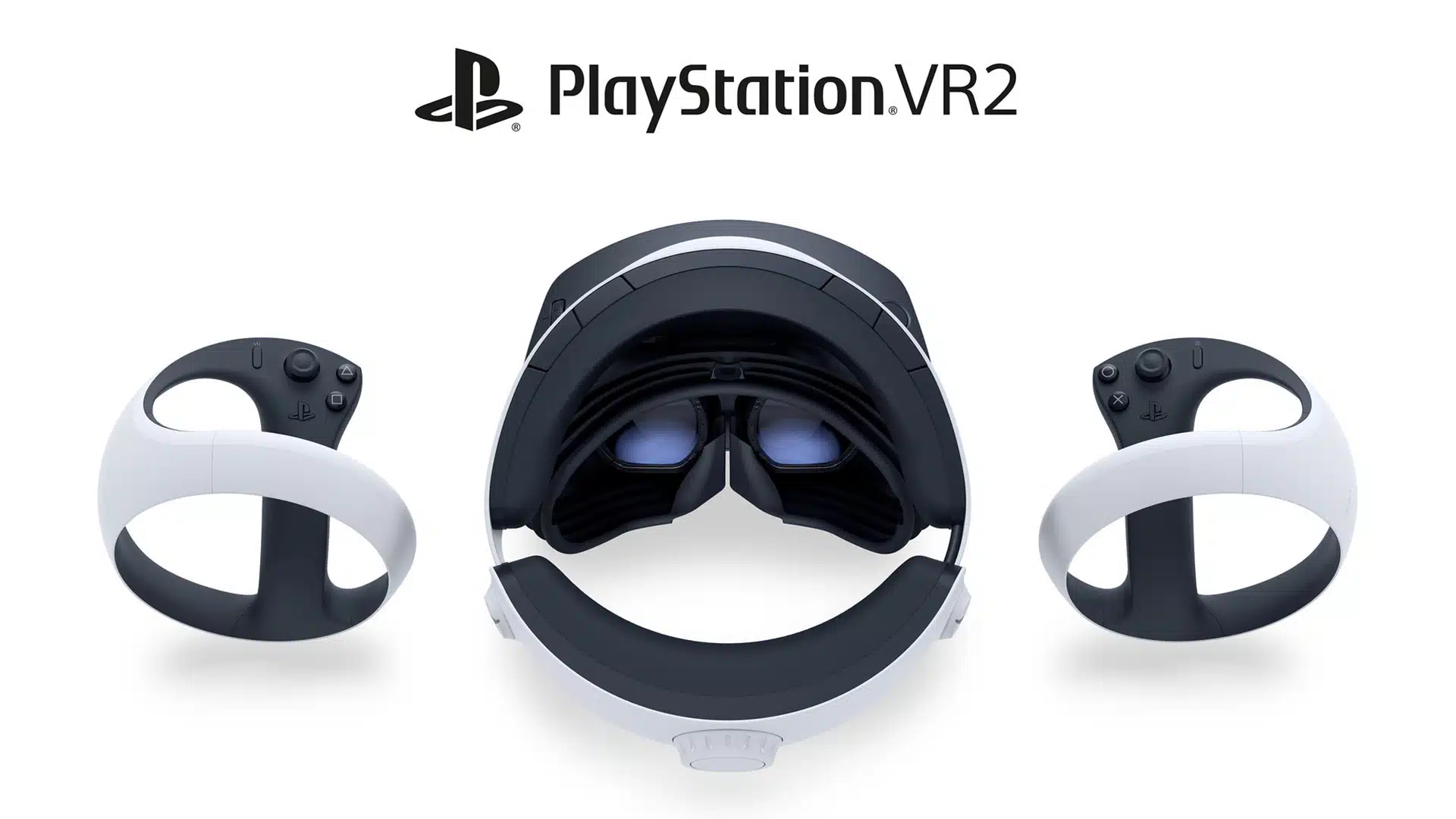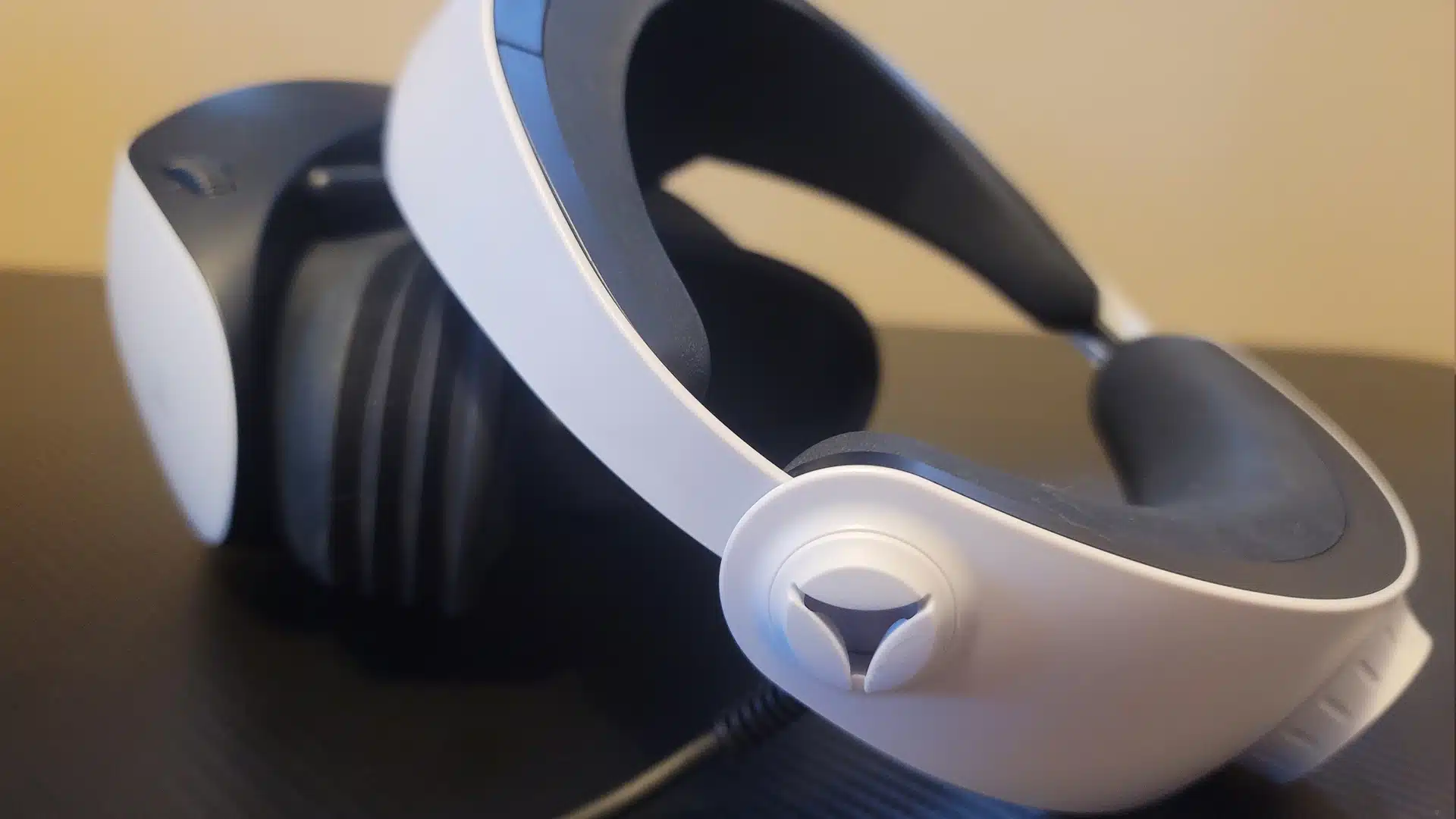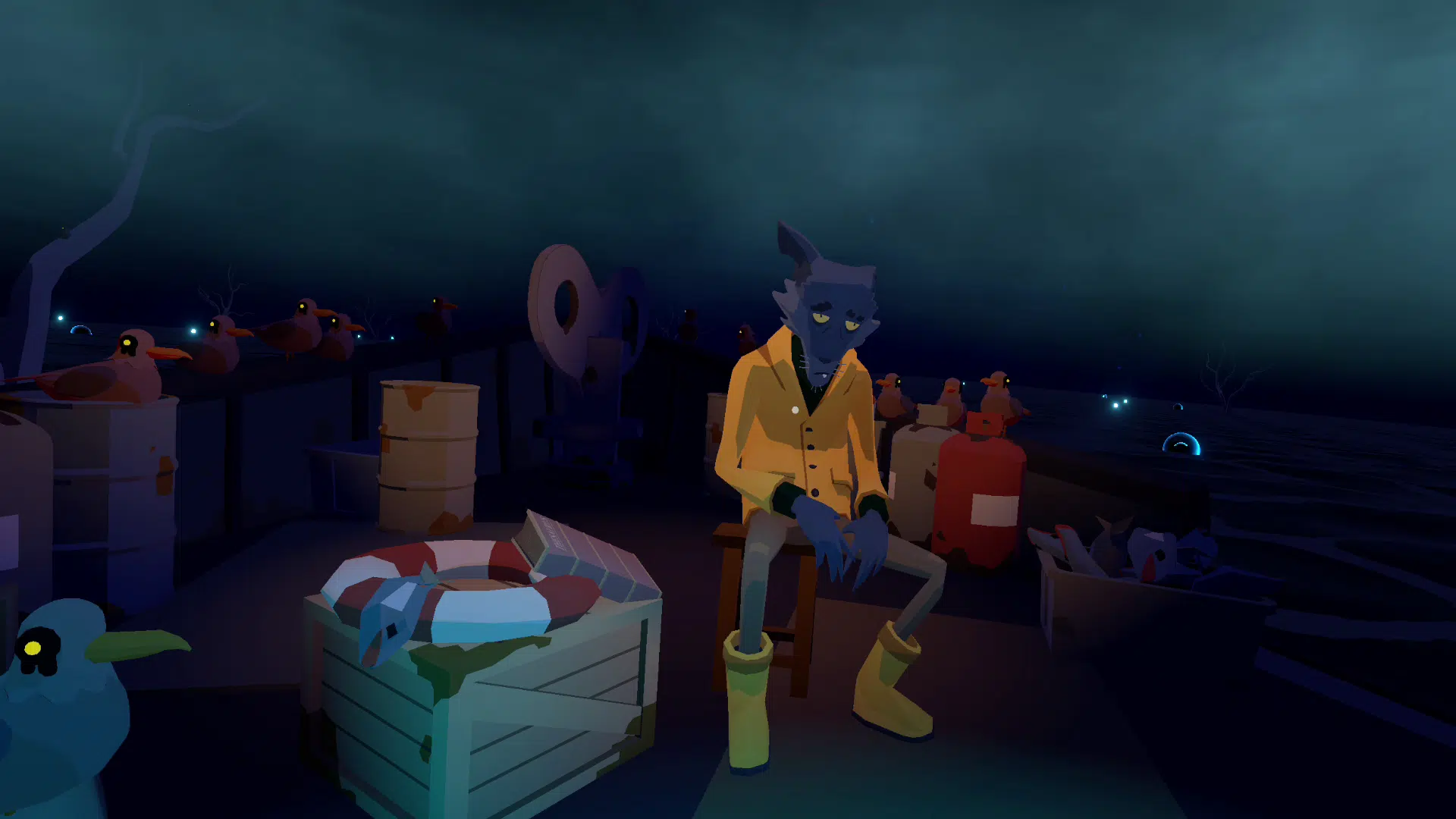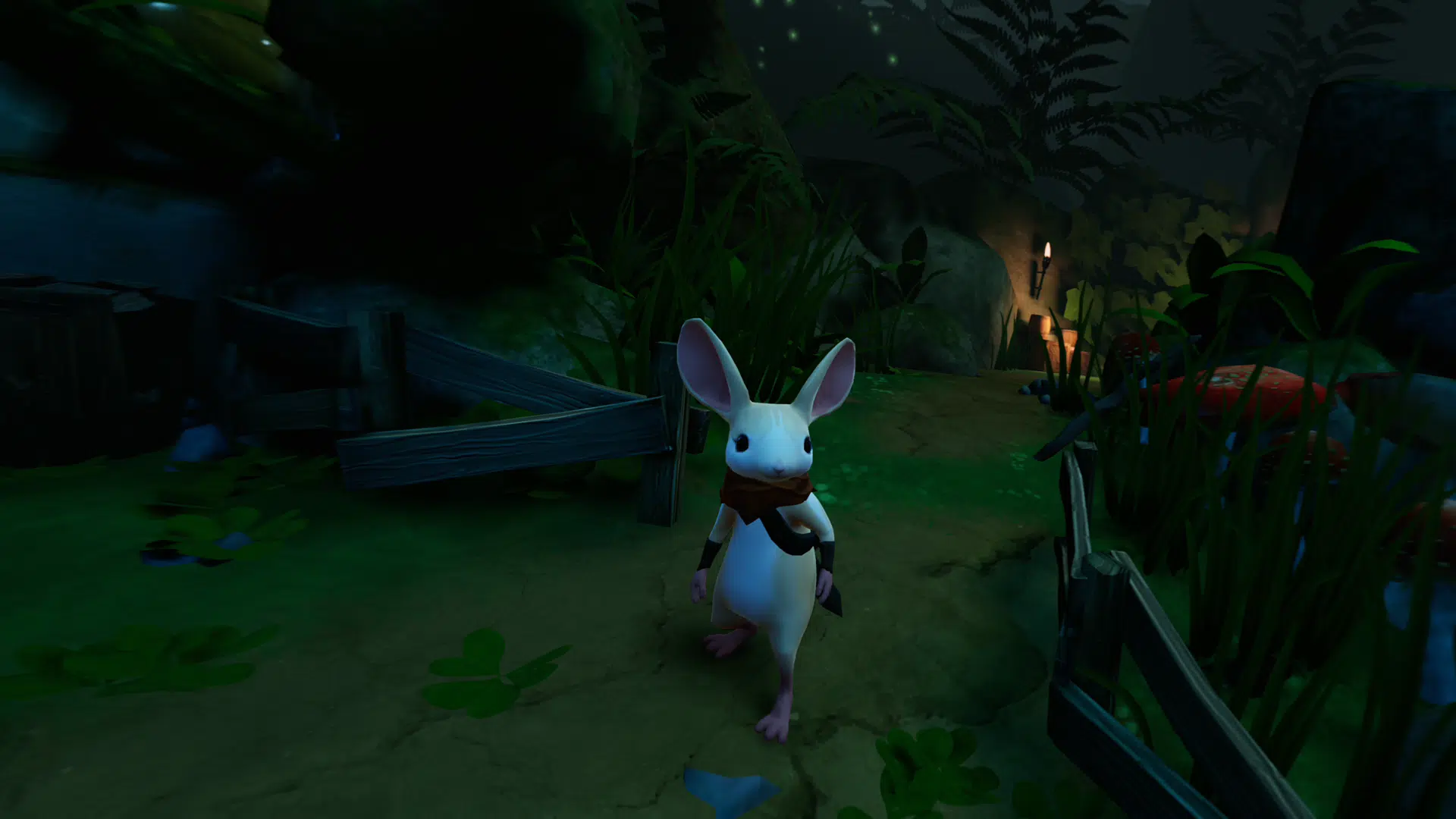While Sony managed to break people’s expectations when it launched the PlayStation VR back in 2016, the device did show its birthing pains when it came to screen resolution, input, and even how it’s set up. These are some of the things Sony was hoping to address with the PlayStation VR2 (PSVR2), which launched this February at a much higher price point. Does it deliver? It does, but it’s not a seamless experience just yet.
Set It Up!
If you owned the PlayStation VR for the PS4, you’ll most likely remember how painful it was to set up. There were cords everywhere! For the PSVR2, that’s not going to be an issue — for the most part. For the new iteration of their VR device, Sony managed to make it, so there’s only one cord needed to hook the headset up to the PS5! No separate box that worked between the VR set and the console, it’s just one cable ran from the headset into the PS5. This significant quality-of-life improvement should push more gamers to try and experience it. I mean, not even factoring in the hassle of untangling, plugging, and sorting the cables in the original PSVR, seeing all those wires that needed to be plugged into the correct sockets was a pretty intimidating task for most.
For those cautious about setting the unit up, don’t. It’s super easy, as plugging it in will trigger its tutorial, and after calibrating it to your eyes (since eye tracking is a huge part of it), it’s pain-free. You can unbox the unit, follow the short setup tutorial, and play in no time. There are no confusing menus, account sign-in and pairing (outside the controllers, but that takes seconds), or whatever will hinder you from just plugging this thing in and playing.
That’s not to say there aren’t any issues setting the device up, as there are, though it’s not as complicated as before. Also, the fact that your play area won’t look like an octopus threw up is a huge plus.
While the unit is easy to set up, the hardware isn’t without issues. For one, the PSVR2 controller battery life, for lack of a better term, sucks. It’s easy to drain it, and it also takes a while to charge. You’ll also need two separate USB type C cables to charge each one. This is an annoyance that the official charging dock can solve, but you’ll need to add more to the unit’s already-high entry price point.
As for the head unit itself, it is still a wired experience, which means you can still get caught up in real-world obstacles if you’re not careful. Sony knows this, as it constantly reminds you to clear your playing space to prevent accidents. Of course, the headset being corded also means latency issues are almost non-existent, and you don’t need to charge it (our Quest 2 lasts only a few hours under heavy load) or have any bulky battery packs stuck to it. There is an earpiece built-in with two short wires with earbuds connected. I guess it works. But it would have been better if it was somehow baked into the head unit without any cables that get in the way.
Massive Improvements
Outside of the nitpicks, Sony has made a lot of progress for the PSVR2. Not only does it look and feel way better than its predecessor, but it also functions leagues above it. Remember those sub 1080P, anti-aliasing nightmares, and fogged lenses on the original PlayStation VR? Yeah, that’s gone for the PSVR2 games. Games can now render at full 4K, with each OLED panel in the set offering 2,000 x 2,040 resolution, with little to no frame stuttering (of course, this all depends on the game). That said, some might still want to take a break after an hour or two of playing if they easily get nauseous with virtual reality experiences.
The PSVR2 also has better ventilation. You’ll still get a bit sweaty, especially when playing games requiring a lot of movement, but the lenses on the headset don’t fog up, or at least we didn’t notice during our gaming. I remember that being a big thing with the PSVR, always having to remove it to clean the lens, only to get fogged up a few minutes later. Other headsets also suffer from the issue, so we’re glad to see that PlayStation has, for the most, engineered a solution to help keep heat and moisture away from the lenses.
One major new addition is eye-tracking tech in the PSVR2. It’s a game-changer when it comes to experiences, and even at this early stage, some games and apps are already making good use of it. Using your eyes to navigate menus, select items, and more really feels like the future.
What we’re really excited to see with the eye-tracking is how studios will use it in terms of gameplay and even narrative. We know Switchback, a horror rail shooter from Super Massive games, will feature enemies that move if you blink. But another title that came out recently was Before Your Eyes, a game initially designed for mobile and PC using a webcam. It tracks your eyes, which worked all right on those devices, but the PSVR2 truly elevated to a new height with VR. The eye-tracking mechanics are something else, and never would we have dreamed of seeing them used as a way to tell a story. If you blink, your whole life could literally flash before your eyes in Before Your Eyes. It’s absolutely crazy but innovative, and we cannot wait to see where eye-tracking for VR brings us.
There’s also a new rendering method (foveated) that uses eye-tracking to allow the image quality of VR games to look even better. The headset can track wherever your eyes are looking, and if the game uses foveated rendering, it’ll render based on eye-tracking. So what you look at will always be rendered to the highest level it can, while outside of your focus view is using less rendering power. You’ll never notice as PSVR2 tracks and adjusts seamlessly. Playing Gran Turismo 7 and seeing this technique in action was truly a sight to behold as details of the interior and outside looked just as good as running it on the flat screen version.
Speaking of Gran Turismo 7, it’s a whole PS5 experience playable entirely in VR. Like Before Your Eyes, the PSVR2 proves how much VR can improve standard gaming. GT7 already felt great when using a controller or steering wheel, but add VR to it, and it truly feels like you’re driving an actual car. The PSVR2 offers head-tracking, which is standard for VR sets, but the fact that GT7 makes full use of it, allowing you to drive around while also looking around the vehicle, using its mirrors, and checking your speed. This is a massive leap over the experience offered for PSVR in Gran Turismo Sport.
One thing you don’t get during the flat screen experience is how realistic the glare is in this game. The sun peeking around a corner is so bright and blinding, yet in VR, I can do exactly what I do in real life. Lean back, or adjust my seating position so the vehicle interior can block the sun. The headlights of other drivers when you are racing in the night can be just as blinding, but it feels so realistic being able to turn my head slightly, so it’s out of my view. It’s such an immersive experience that I’m finding it hard to want to go back to playing the normal way.
As for the controller, it does feel like a more natural extension of your arms and hands, way more than a PS Move could ever be. It “wraps” around your entire hand and feels natural. Each side corresponds to that button layout’s buttons (the left hand has the L1, L2, etc.), which is logical. The haptics feature is very light, especially in the headset, but understandable, as too much feedback could prove unpleasant. Overall, games that use haptics properly feel even more immersive. FPS Pavlov applies haptics to the controller, and bringing it up near your ear will produce communication effects that can be heard and felt.
The PSVR2 sports an OLED screen that can supply an entire 110-degree FOV (field of view), thus allowing more info to be displayed to the player. This is in addition to the improved visual fidelity of the games available. On top of that, there’s also HDR (high dynamic range) support, so players can expect deeper blacks and brighter whites and an enhanced color palette when viewing games in the virtual world.
The Future Is Here?!
Priced at a whopping $549, the PSVR2 is not an easy purchase to convince most gamers. However, when looking at what all the current competitors offer, the tech packed inside the PSVR2 still puts it on the lower side of pricing. Even taking account of the price of the PS5 and PSVR2, high-end VR at the level of fidelity that PlayStation is offering is going to a far steeper price for those on PC. The Valve Index VR retails for $750 alone and needs an external tracking system, so the cost adds up ($1000 bundle includes the Index headset, controller, base, and a few accessories). That gets you fairly close to the combo of a PS5 and PSVR2 ($1050), but that isn’t even considering the price of a PC to run the same level of fidelity that the PS5 offers.
Of course, there’s Quest 2, which retails at $400. It’s standalone, but its features are nowhere near as close as what the PSVR2 offers, and you won’t get games that look as good, either. But it’s an option nonetheless, one that PC owners have. Speaking of options for PC gamers, PSVR2 is not compatible with PC. It feels like a missed opportunity, as VR is pretty niche. Maybe a firmware and driver update will fix that down the road.
The idea that Sony will be supporting it with a load of games and experiences makes the price a bit easier to swallow. Sony has kickstarted that at launch and has even enhanced old titles to add PSVR2 support at a pace that’s faster (and better) than their VR counterparts.
Addressing the other elephant in the room. No, PSVR2 is not backward compatible with PSVR games. I know PlayStation announced this well before release, but one can’t help but feel disappointed about not being able to play old titles. With that said, I do understand why, as it would require studios to go back and update these titles to support the new controllers.
That’s time and money, and if you look at the PC market of VR games, you can see this is also true, as several games are only playable on the Oculus Rift. Most games that do support multiple headsets natively are due to them being designed as such.
The silver lining with this is that when a game gets updated, it shows how much more the PS5 and PSVR2 can offer over its last-gen port. Both Moss games, for example, benefit from an increased FOV and improved gameplay with the new Sense controllers. Graphics have also seen a significant bump in addition, making it the definitive VR version of the game to play.
Another example is how GT Sport has VR support, but it’s minimal compared to what Polyphony delivers with the native version of GT7. Not to mention all the haptics and adaptive functions. The PSVR2 may be a VR headset, but it offers features and technology surpassing the original PSVR.
Seeing Reality…
PlayStation has a long history of innovating and pushing the boundaries of gaming. They introduced and popularized true 3D gaming, built memory cards, supported blu-ray, innovated with SSD speeds, and many other things that paved the road for others. Virtual Reality is yet another frontier where they’re, without question, leading in innovation. Everything about the PSVR2 screams true next-gen, and we can comfortably say that, by far, it’s perhaps the best VR experience we’ve had.
Having said that, the big concern is just how much PlayStation will support the system. It’s a miracle we even got a second-generation VR set from the company, as the original PSVR, though good for what it offered, was a niche with support from PlayStation eventually eased off, with most of its offerings coming from third-party studios.
With the PSVR2, PlayStation has proven to us that virtual reality games don’t have to be some 30-minute tech demo. Games can be fully realized thanks to the power of both the headset and the PS5. With this in mind, Sony needs to be more supportive of it — especially considering its high price point. This first batch of first-party games can’t be the only highlights of the headset for the rest of the gen. PlayStation has to keep support up, not only with third-party partners but also with first-party offerings that extend beyond demos, gimmicks, and mainline titles getting VR support.
Games like Half-Life Alyx, Bone Labs, and so many others on PC are beloved by the market, not simply because they work and feel good in VR, but also because of how much work and dedication has been put into them, to make them feel like an actual experience that would be offered in a traditional AAA game while showing us exactly how much VR can push those experiences.
PlayStation has the hardware, and they have the power to deliver that; they just have to show that they’re willing to go all in to prove that their AAA output can also be something that can grow with VR gaming. The tech is already there, but the software will make or break the PSVR2. And with the PS5 just entering its stride, the future for PSVR2 can be very bright since it can grow alongside it…provided Sony is willing and has realistic expectations for the device.
Score: 9/10
Pros:
- Provides an easy-to-step-up experience.
- Comfortable to use and lightweight.
- Cameras on the headset offer inside-out tracking. No more having to rely on and stay within view of an external camera like the last-gen PSVR.
- 4K HDR support, with a 110-degree FoV. The image quality is incredibly clear.
- Since controllers are fantastic and offer modern VR features such as finger tracking. They also have both haptics and adaptive trigger features.
- Eye-tracking and Foveated rendering are game-changers,
- High-end VR without the need for a PC.
Cons:
- The controller battery life isn’t great.
- Still wired – easy to get the cord caught up on yourself since VR games tend to make you move, or at least is an instinct to do so.
- No onboard speakers – does come with some cheap headphones, at least.
- No PC support, but that can probably change down the road.
- Price isn’t accessible for everyone.
The PlayStation VR2 is now available for purchase for $549.99. Sony provided a PlayStation VR2 unit for review purposes. All in-game images were captured directly from the PS5, while pictures of the PlayStation VR2 unit were provided by the publisher. You can read MP1st’s review and scoring policy right here.






